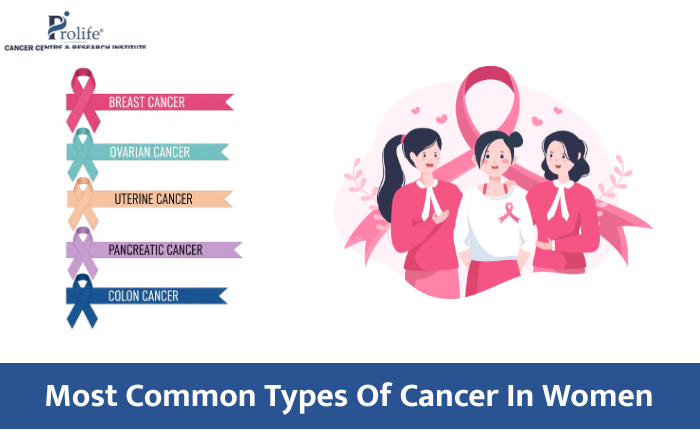Cancer is a major health concern for women worldwide. Early detection and awareness of symptoms can greatly improve treatment outcomes. This blog provides an in-depth look at the most common types of cancer in women, their symptoms, and the treatment options available. Understanding these can empower women to take proactive steps in managing their health. Whether you’re seeking knowledge for yourself or a family member, this blog offers valuable insights into the fight against cancer. If you are in Pune, consulting a cancer specialist like Dr. Sumit Shah can be an important step towards effective cancer treatment.
Overview of common cancers in women
Cancer can affect different parts of the body, and some types are more common in women. The most common types include breast, cervical, ovarian, uterine, lung, and skin cancers. Each type has unique symptoms and risk factors, so awareness and early detection are important.
1. Breast Cancer
Breast cancer symptoms
Breast cancer is the most common cancer in women worldwide. It starts in the cells of the breast and can spread to other parts of the body if not caught early.
Common symptoms:
- Lump or mass in the breast
- Change in breast size or shape
- Nipple discharge (other than breast milk)
- Pain in the breast or nipple
- Redness or scaling of the breast or nipple area
Breast Cancer Treatment Options :
- Surgery: Removal of the tumor (lumpectomy) or the entire breast (mastectomy).
- Chemotherapy: Use of medicines to destroy cancer cells
- Radiation therapy: Use of high-energy beams to target and kill cancer cells
- Hormonal therapy: Blocks hormones that fuel certain cancers
- Targeted therapy: Drugs that target specific characteristics of cancer cells
- Immunotherapy: Boosts the body’s immune system to fight cancer
2. Cervical Cancer
Cervical cancer symptoms
Cervical cancer starts in the cells of the cervix, the lower part of the uterus that connects to the vagina.
Common symptoms:
- Abnormal vaginal bleeding (between periods, after sex, or after menopause)
- Unusual vaginal discharge
- Pain during intercourse
- Pelvic pain
Screening Methods:
Pap test: Detects precancerous or cancerous cells in the cervix
HPV test: Detects the presence of HPV, a major cause of cervical cancer
Cervical Cancer Treatment Options
Treatment Options:
- Surgery: Removal of cancerous tissue (conization, hysterectomy)
- Radiation therapy: High-energy radiation to kill cancer cells
- Chemotherapy: Drugs to destroy cancer cells, often used in combination with radiation
- Targeted therapy: Drugs that target specific proteins on cancer cells
3. Ovarian Cancer
Ovarian cancer symptoms
Ovarian cancer begins in the ovaries and is often detected at a later stage because of its subtle symptoms.
Common symptoms include:
- Bloating or swelling in the abdomen
- Feeling full quickly after eating
- Weight loss
- Pelvic discomfort
- Changes in bowel habits
- frequent need to urinate
Ovarian Cancer Treatment Options :
Surgery: Removal of the ovaries, fallopian tubes, and sometimes the uterus
Chemotherapy: Drugs that kill cancer cells
Targeted therapy: Drugs that target specific molecules involved in cancer growth
Hormonal therapy: Uses hormones or hormone-blocking drugs to fight cancer
Conclusion :
Cancer remains a serious health concern for women, but with increased awareness, regular screenings, and advances in treatment, outcomes continue to improve. Staying informed about the symptoms, risk factors, and treatment options for common cancers can make a significant difference in early detection and successful treatment.
For the best care and the latest in cancer treatment, schedule a consultation with Dr. Sumit Shah, a renowned cancer surgeon in Pune. Early detection and treatment plans can make all the difference. Contact Dr. Sumit Shah’s clinic today to take charge of your health. Share this article to spread awareness and encourage others to make their health a priority.



